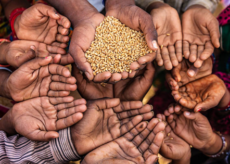8 ways demonetised notes were used to launder money
Not later than hour after Prime Minister announced demonetisation of Rs. 500 & Rs. 1000 notes on November 08, 2016; an illicit business of converting these two currencies into jewelleries gold, diamonds & silver, forex had started. And this business started spreading across India.
Let’s check out the ways money laundering business rapidly started spreading:
Foreign exchange: Individuals who’d good amount of black money, converted crores of demonetised notes into forex especially USD. This is due to the fact that dollar is the most sought currency across the world including India. A dollar typically costs around Rs. 120 – Rs. 140 in old demonetised notes.
Hawala: Black money stashers made hawala their favorite money transfer option. People started sending their black money abroad through hawala dealers also called as agents. These middleman charge a very high premium to park the money in foreign currency in Arab and South Asian countries which mainly includes Dubai, Singapore and Malaysia. Hawala has traditionally considered to be a channel to transfer funds.
Bullion: One of the most easiest and convenient option used to launder money was the bullion. From the night on which currency ban was announced, people started investing unaccounted wealth in buying bullion, jewelry and diamonds. Other options were buying expensive luxury stuffs such as watches, etc.
Read more on effects of currency ban
Petrol pumps: Since they were allowed to accept old currency notes till 24th November, several petrol pump owners across the country assisted in cleaning the black money by accepting old notes but in return of smaller sum.
Hospitals: Surprisingly hospitals were also involved in laundering black money by accepting demonetized currency notes.
Check out positive impact on Indian economy due to demonetisation.
Nepal – Bhutan: Since Indian government allowed old notes can be exchanged in these countries, individuals created opportunity to park their money via smuggling to these countries. Since border vigilance is poor in these two countries, transfer of money seemed very effortless.
Tribal areas: This includes Northeast areas such as Nagaland, Manipur and Arunachal Pradesh since they are tax exempted. No transaction related questions are generally asked in these places. So disposing of cash took place through this channel as well.
Jan Dhan Account: Started in the year 2014 for poor people by making one bank account for each family in India, rich people made poor people become rich for a while by depositing banned currency notes in JDY account holder. So accounts which are ideally dormant started seeing lakhs of rupees. Income tax department is now going to scan every such suspicious account.
So post the currency ban, the most critical question still remains unanswered – Will the poor get poorer and the rich richer post demonetisation? Please spare some time and share your valuable thoughts in the comments section below.



